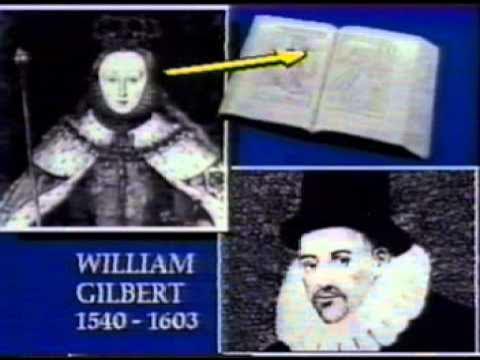Antoine Lavoisier and the Origin of Modern Chemistry | AMS OpenMind
Summary
TLDRIn the 18th century, Antoine Lavoisier revolutionized chemistry by debunking the long-held phlogiston theory. Through experiments with combustion and gases, Lavoisier demonstrated that matter is made of elements, not fire-like fluids, and that elements combine to form compounds like water, composed of hydrogen and oxygen. His work led to the identification of 55 elements, the development of a systematic naming system, and the creation of the first chemistry textbook. Lavoisier's discoveries formed the foundation of modern chemistry, showing that matter is neither created nor destroyed, but transforms through chemical reactions.
Takeaways
- 😀 Aristotle's theory of matter being made of fire, water, air, and earth was accepted for 2,000 years.
- 😀 In 1772, Antoine Lavoisier challenged this theory while studying combustion and gunpowder.
- 😀 The phlogiston theory, which suggested burning released a fire-like fluid, was widely believed at the time.
- 😀 Lavoisier and his wife Marion Poles designed an experiment to test the phlogiston theory using a sealed vessel.
- 😀 Lavoisier's experiment showed that burning substances did not lose weight, which contradicted the phlogiston theory.
- 😀 The discovery that air could contain different gases that could combine with other substances was pivotal.
- 😀 Lavoisier confirmed Cavendish's experiments, proving water is a compound made of hydrogen and oxygen.
- 😀 This was a revolutionary discovery, as it challenged the belief that classical elements like air and water were pure.
- 😀 Lavoisier and his team identified 55 elements and developed a systematic way to name them.
- 😀 Lavoisier's work culminated in the first chemistry textbook, which outlined three fundamental ideas: phlogiston doesn’t exist, matter is made of elements, and matter isn’t created or destroyed, just transformed.
Q & A
What theory about matter was widely accepted for over 2,000 years before Antoine Lavoisier's work?
-The theory that matter was made up of four elements: fire, water, air, and earth, as proposed by Aristotle.
What was the popular belief about combustion before Lavoisier's experiments?
-It was believed that combustion involved a fire-like fluid called phlogiston being released from matter, making objects lighter after burning.
How did Lavoisier's experiment challenge the phlogiston theory?
-Lavoisier demonstrated that after combustion, objects didn't lose weight, and instead, they gained weight, suggesting that air was not simply a substance to release phlogiston.
What was the key finding from Lavoisier's experiment with phosphorus?
-Lavoisier found that the weight of the vessel remained unchanged during combustion, but the matter inside the vessel gained weight, which suggested that air was made of different gases.
How did Lavoisier confirm Cavendish's findings about the composition of water?
-Lavoisier used a vacuum pump to remove air from a vessel and then ignited a mixture of inflammable air and dephlogisticated air with an electric spark, producing water, which confirmed that water was a compound of hydrogen and oxygen.
What were the implications of Lavoisier's discovery about water?
-Lavoisier's discovery that water was a compound of hydrogen and oxygen challenged the idea that water was an element, helping to redefine the understanding of matter and chemistry.
How did Lavoisier's work change the way elements were viewed?
-Lavoisier's work showed that the classical elements like fire, water, air, and earth were not fundamental, but instead were combinations of newly identified elements.
What was Lavoisier's major contribution to chemistry textbooks?
-Lavoisier condensed his work into the first chemistry textbook, which outlined the idea that matter is made of elements, that matter isn't created or destroyed but transforms, and that phlogiston does not exist.
What method did Lavoisier and his colleagues use to identify new elements?
-Lavoisier and his team identified 55 elements and developed a systematic method for naming them, which helped standardize the language of chemistry.
What fundamental concept in chemistry did Lavoisier establish that is still relevant today?
-Lavoisier established the law of conservation of mass, which states that matter is neither created nor destroyed during chemical reactions, but instead transforms.
Outlines

هذا القسم متوفر فقط للمشتركين. يرجى الترقية للوصول إلى هذه الميزة.
قم بالترقية الآنMindmap

هذا القسم متوفر فقط للمشتركين. يرجى الترقية للوصول إلى هذه الميزة.
قم بالترقية الآنKeywords

هذا القسم متوفر فقط للمشتركين. يرجى الترقية للوصول إلى هذه الميزة.
قم بالترقية الآنHighlights

هذا القسم متوفر فقط للمشتركين. يرجى الترقية للوصول إلى هذه الميزة.
قم بالترقية الآنTranscripts

هذا القسم متوفر فقط للمشتركين. يرجى الترقية للوصول إلى هذه الميزة.
قم بالترقية الآنتصفح المزيد من مقاطع الفيديو ذات الصلة
5.0 / 5 (0 votes)






